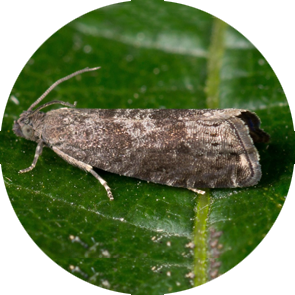


| Latin Name | Grapholita funebrana |
| Common Name | Plum fruit moth |
| Biology | Adult moths are active at night and lay eggs on the undersides of plum tree leaves or on fruits. The larvae bore into plum fruits, forming tunnels within the fruits; the infested fruits either drop prematurely or turn red early. They produce 2-3 generations per year, overwintering as mature larvae by spinning cocoons in the soil. |
| Damage | This pest primarily damages plum trees but can also harm apricot and cherry trees. |
| Distribution Regions | Europe |
| Monitoring | Pheromone lures mimic natural sex pheromones to attract male insects into specialized traps for population monitoring and suppression. As a core IPM component, monitoring enables early risk detection and targeted control. Mass trapping reduces mating opportunities to curb offspring populations. Protocols: ●Use only with matched traps. ●15-45 traps/hectare,replace/replenish every 4-6 weeks. ●Wear gloves or wash hands with detergent when switching lure types. ●Refer to trap-specific hanging instructions. |
| Recommended Traps | Delta Trap, Wing Trap |

分享您的联系信息,即可获得精准匹配的信息素解决方案。如果我们现有的产品组合缺乏最佳匹配,我们的合成化学团队将启动定制开发——从分子结构设计到规模化生产。